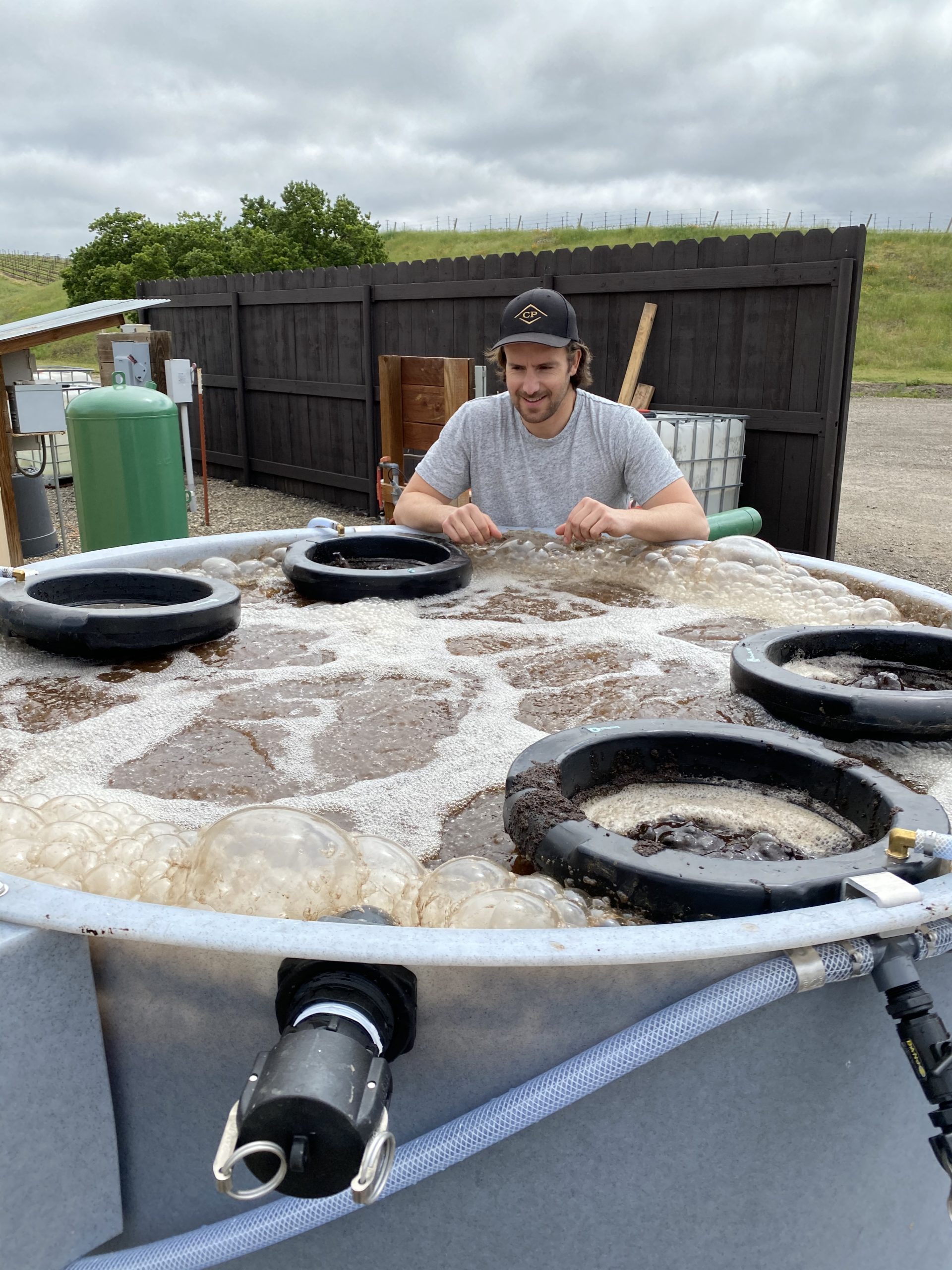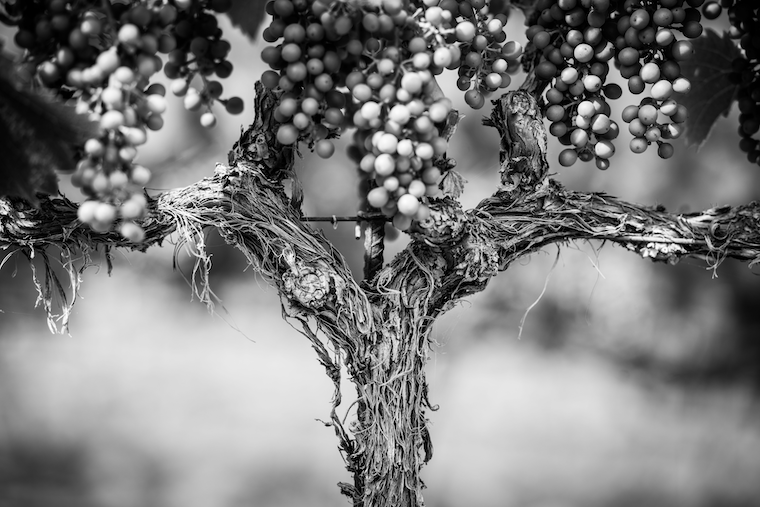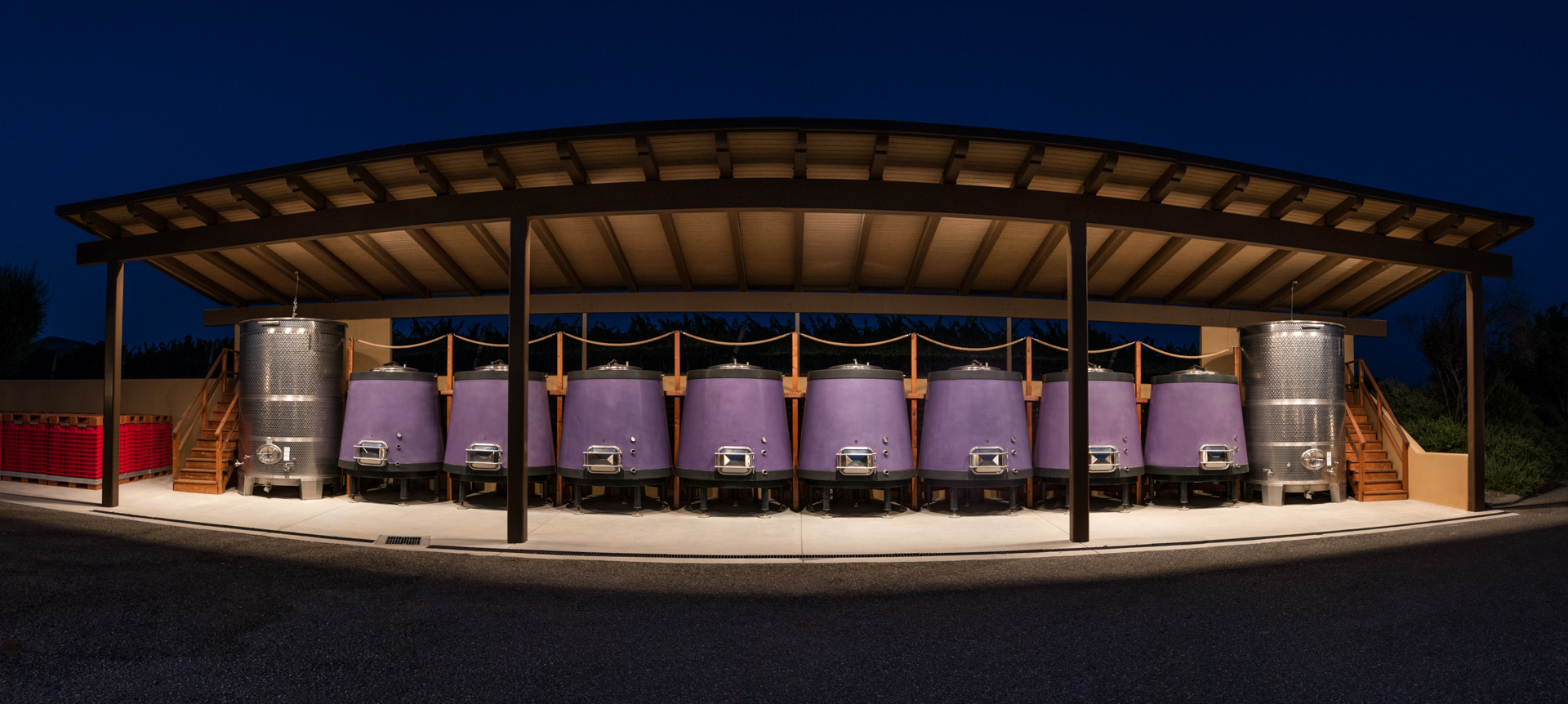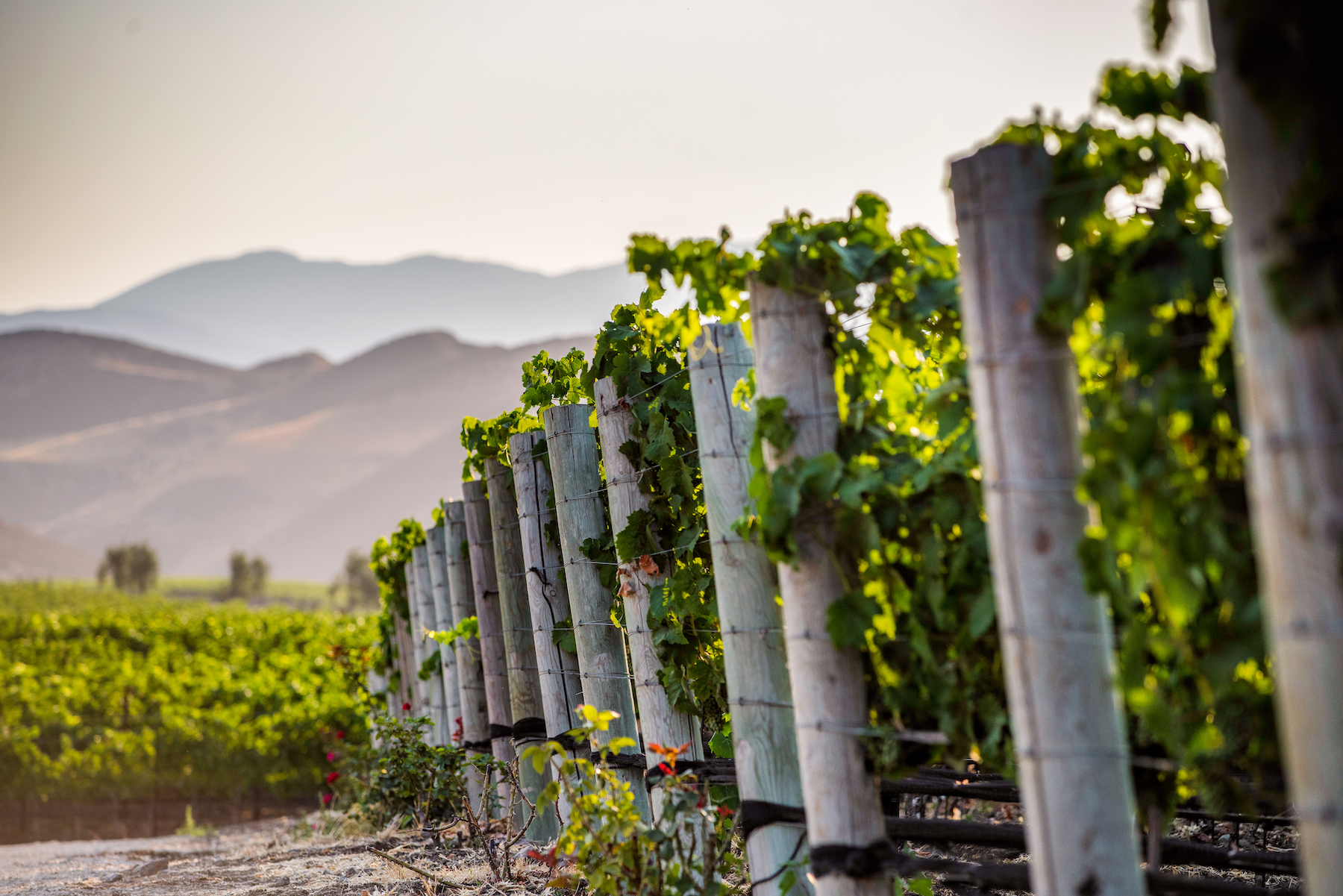How Farming with Microbes Produces Better Wine

The grapes produced reflect the conditions they grow within. Viticulture seeks a balance between the vine and its environment – from the climate to the microbiota of its soil. It is logical to consider the vine’s fruit as the fruit of that environment. Therefore, the wine in your glass is ultimately a reflection of its place.
life within the soil.
An often-disregarded aspect of soil is the microbiota – the microorganisms of a particular site. We reference the texture and origin of soil but ignore the life within – life being the sum of all microbes and living organisms. If we consider soil as an ecosystem more than a substrate, we realize it is a marketplace – a place of multiple currencies and exchange rates. Carbon, Nitrogen, and micronutrients are the core currencies in this marketplace.
It is a marketplace between different groups – fungi, bacteria, algae, insects, and plants. Plants are the primary focus of viticulturalists as they are at the end of that exchange chain. If you consider the soil as a living environment, you will realize bacteria, algae, and fungus start decomposing the organic matter. In other words, they free the Nitrogen and Carbon-based compounds the plant leverages for growth. If you imagine a leaf or compost decaying in the soil, the microorganisms break it down for the plant’s root. Fungi are fundamental as they build a network within the vine’s roots that provides the necessary micronutrients. Without fungus, the vines would struggle to find micronutrients – this process is called mycorrhiza.
so how do we promote life within the soil?
One way to improve life in the soil is to bring it there. To do so, we use a compost tea. Compost tea is a worm-based compost brewed in an aerated water bath for a duration of 24-hours.
The compost we use is worm-based, meaning that it is digested by worms already. By digesting it, the worms improve the microbial content of the compost. Then we put that compost into water with the nutrients necessary for the microbes to multiply. We aerate it for one day allowing the microbes to breathe and propagate. The result is a liquid tea comprised of essential microorganisms – bacteria, fungi, and algae. We then apply it throughout the vineyard via a short irrigation, so the liquid tea permeates the soil.
The integration of compost tea.
Integrating the compost tea into the vineyard leads to happier vines. Happier vines display fuller clusters and balanced canopies in size and color – not too light, not too green. Compost tea is a gentle way to improve soil and vine health. It is not a fast-acting ingredient like fertilizer, as you feed the soil system to feed the plant appropriately. Ultimately, the leaves decay later in the season, allowing for a prolonged ripening.
farmers before we are winemakers.
Integrating the compost tea into the vineyard leads to happier vines. Happier vines display fuller clusters and balanced canopies in size and color – not too light, not too green. Compost tea is a gentle way to improve soil and vine health. It is not a fast-acting ingredient like fertilizer, as you feed the soil system to feed the plant appropriately. Ultimately, the leaves decay later in the season, allowing for a prolonged ripening.


